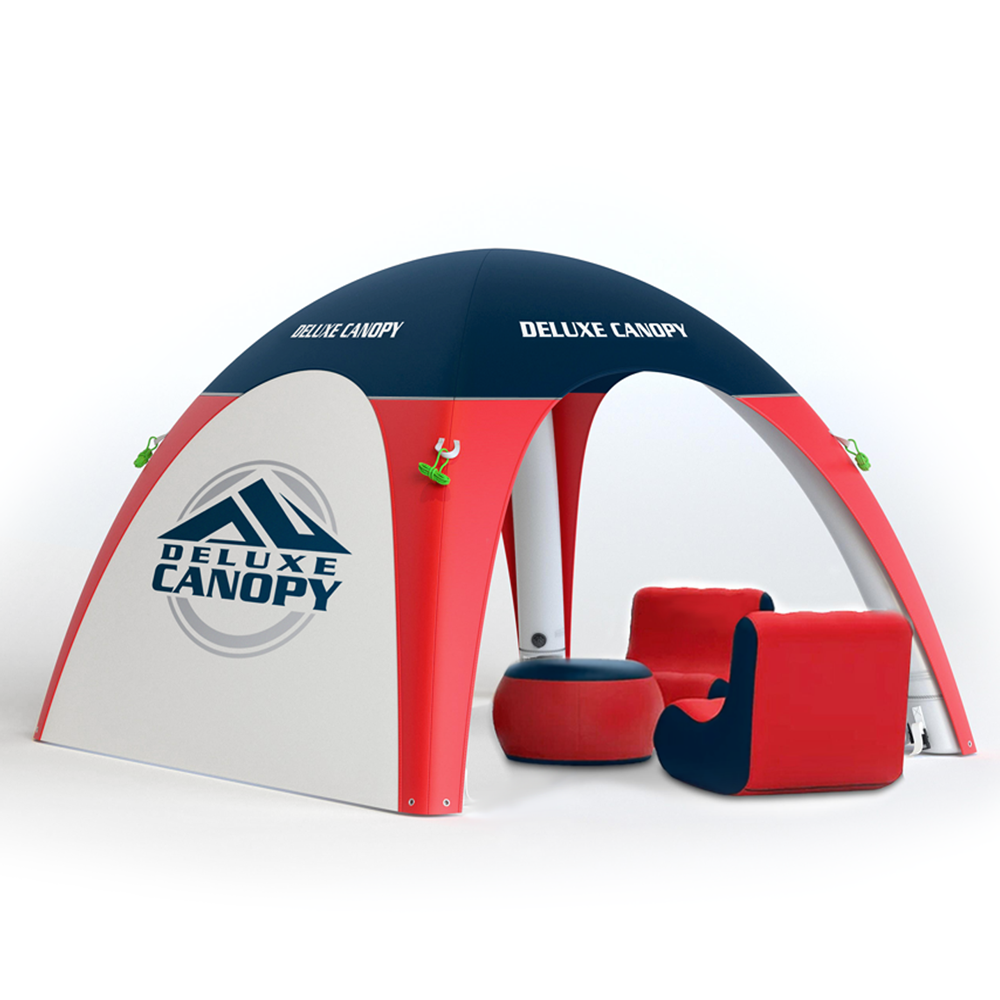Forget cumbersome poles and complex assembly instructions. Inflatable tents, also known as inflatable air tents, are revolutionizing outdoor shelters for events, promotions, and even camping. Using pressurized air beams instead of traditional poles, these structures offer rapid setup, unique designs, and surprising durability. This guide explores the world of inflatable tents, covering their types, benefits, uses, and what to look for when choosing the best inflatable tent for your needs.
What are Inflatable Tents?
At their core, inflatable tents replace rigid pole structures with inflatable beams or tubes made from durable materials (like TPU - Thermoplastic Polyurethane) protected by heavy-duty fabric sleeves. These beams are inflated using a pump (manual or electric) to create a sturdy, self-supporting frame. The tent fabric (often polyester or PVC) is attached to this frame.
Types of Inflatable Tents
Inflatable air tents come in various shapes and sizes:
- Inflatable Event Tents/Marquees: Larger structures designed for promotions, festivals, trade shows, and hospitality. Can include arches, domes, cubes, and custom shapes. Often feature large areas for branding.
- Inflatable Camping Tents: Designed for recreational use, ranging from small backpacking models to large family-sized tents. Focus on weather resistance and living features.
- Inflatable Domes: Geodesic or tunnel dome shapes offering excellent stability and unique aesthetics, popular for events and glamping.
- Inflatable Canopy Tents: Similar in function to traditional pop-ups but using inflatable frames. Offer quick shade and branding opportunities. (See Article 12 for more detail).
- Custom Inflatable Structures: Beyond tents, inflatables can be made into arches, product replicas, kiosks, and more.
Advantages of Inflatable Tents
Why choose an inflatable outdoor tent?
- Rapid Setup/Takedown: Often significantly faster to erect than pole tents of comparable size, especially larger structures. Deflation is also quick.
- Ease of Use: Typically requires fewer people for setup. No poles to connect or potentially break.
- Portability: Despite their size when inflated, they often pack down relatively compactly. The lack of rigid poles can save space and weight.
- Unique Designs: Air structures allow for curves, arches, and shapes difficult or impossible to achieve with traditional poles, making them visually striking.
- Durability: High-quality inflatable tents use robust materials for beams and outer fabric, designed to withstand wind and weather (when properly anchored). Air beams can flex in wind rather than snapping.
- Safety: No rigid poles reduce potential injury hazards during setup or in case of structural failure.
Potential Considerations
- Pump Required: You always need a pump (manual or electric) which adds an extra item to carry. Electric pumps may require a power source.
- Puncture Risk: While durable, the air beams can be punctured (though repair kits are usually included).
- Air Pressure Maintenance: May require occasional topping up of air pressure, especially with temperature fluctuations. High-quality valves minimize this.
- Cost: Can sometimes be more expensive than traditional pole tents of similar size, especially for high-quality event structures.
Common Uses for Inflatable Tents
- Promotional Events & Brand Activations: Eye-catching branded structures.
- Trade Shows & Exhibitions: Unique booth designs.
- Festivals & Outdoor Events: Vendor booths, shade areas, information points.
- Sporting Events: Team shelters, registration tents, first aid stations.
- Camping & Glamping: Quick setup for recreational use.
- Emergency Shelters: Rapid deployment for temporary housing or medical facilities.
Choosing the Best Inflatable Tent: Key Features
- Material Quality: Durable TPU for air beams, high-denier, UV-resistant, waterproof fabric (Polyester, PVC) for the outer shell.
- Valve System: High-quality, reliable valves that prevent leaks and allow for easy inflation/deflation. Look for pressure release valves to prevent over-inflation.
- Anchoring Points: Robust D-rings or anchor points for secure staking or weighting. Essential for wind resistance.
- Seam Construction: Welded or heavily reinforced seams for air retention and water resistance.
- Included Pump: Check if a suitable pump is included and its type (manual/electric).
- Repair Kit: Ensure a patch kit is included for minor repairs.
- Branding Options (for Event Tents): Look for large printable areas and quality printing methods (like dye-sublimation).
Inflatable tents offer a modern, efficient, and often visually stunning alternative to traditional pole structures. From practical inflatable outdoor tents for camping to large-scale branded marquees for events, their rapid setup, unique design possibilities, and robust construction make them an increasingly popular choice. By understanding the different types available and focusing on key quality features, you can select the best inflatable tent to meet your specific needs, ensuring a quick, easy, and impactful shelter solution.
